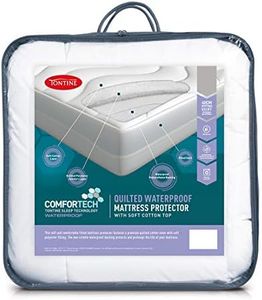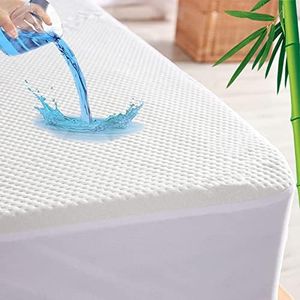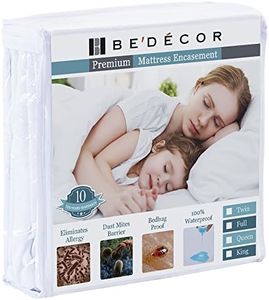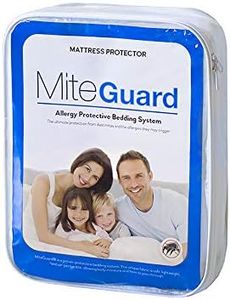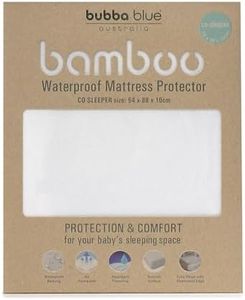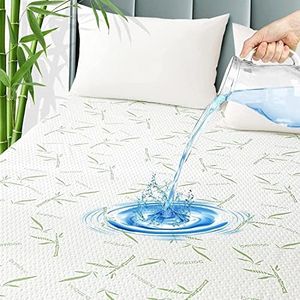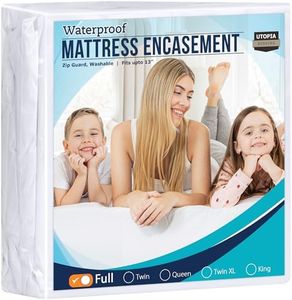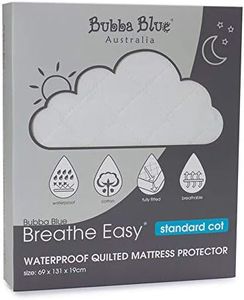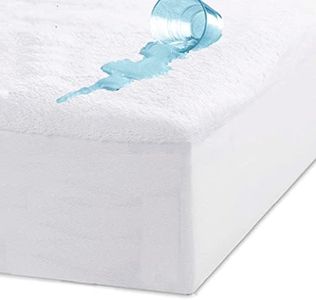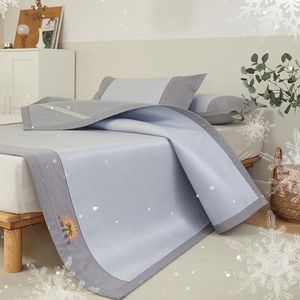We Use CookiesWe use cookies to enhance the security, performance,
functionality and for analytical and promotional activities. By continuing to browse this site you
are agreeing to our privacy policy
10 Best Mattress Covers
From leading brands and best sellers available on the web.Buying Guide for the Best Mattress Covers
Choosing the right mattress cover can make a huge difference to your sleep quality, mattress longevity, and comfort. Mattress covers offer protection against spills, allergens, dust mites, and sometimes even add a layer of softness or cooling. The best cover for you depends on your lifestyle, sensitivities, and how much you prioritize comfort, cleanliness, and ease of care.MaterialThe material is what your mattress cover is made of, which determines its feel, breathability, and durability. Common materials include cotton, polyester, bamboo, or blends, and each has its strengths. Cotton is soft and breathable, while polyester often offers more durability and water resistance. Natural fibers are great for sensitive skin or those who overheat, while synthetics can provide better protection and be easier to clean. Choose a material based on your comfort preferences and any allergies or skin sensitivities you may have.
Water ResistanceWater resistance means the ability of the mattress cover to block liquids like sweat, spills, or accidents from reaching your mattress. Some covers are fully waterproof with a plastic or polyurethane backing, while others are only water-repellent or not resistant at all. For households with children, pets, or if you eat or drink in bed, a high level of water resistance is important. If you’re mainly looking for comfort or breathability and don’t worry about spills, a non-waterproof or lightly resistant cover could be suitable.
BreathabilityBreathability refers to how well air can flow through the mattress cover, affecting your comfort and body temperature during sleep. Highly breathable covers help keep you cool and reduce sweating, which is ideal if you tend to sleep hot or live in a warm climate. Covers with plastic or dense protective layers might trap heat, so if temperature is a concern, look for options marketed as cooling or made of natural fibers.
Fit and DepthFit and depth describe how the mattress cover wraps around your mattress and whether it will stay in place. Covers can come as fitted (like a sheet with elastic edges), zippered (encasing the mattress), or strap-on styles. Mattress depth compatibility is important—measure your mattress height and match it to the cover’s stated depth range so it fits snugly without popping off. If your mattress is extra thick or has a topper, double-check the maximum depth the cover can accommodate.
Allergy ProtectionAllergy protection involves features that block allergens like dust mites, pet dander, and pollen from penetrating the mattress. Covers labeled as hypoallergenic often use tightly woven fabrics or zippered encasements for full sealing. If you or someone in your household suffers from allergies or asthma, an allergy-proof cover can make a significant difference in sleep quality and overall health.
Ease of CleaningEase of cleaning determines how simple it is to maintain your mattress cover. Some covers are machine washable and can be tumble dried, while others require hand washing or air drying. If convenience is important, especially for families or pet owners, opt for a cover that can be regularly machine washed and holds up to frequent cleaning without wearing out.
Noise LevelNoise level refers to how much sound the cover makes as you move on it, especially with waterproof options that may rustle or crinkle. If you’re a light sleeper or sensitive to noise, look for covers that advertise as noiseless or quiet. Softer, fabric-based ascovers usually make less noise compared to those with a plastic or vinyl layer.
